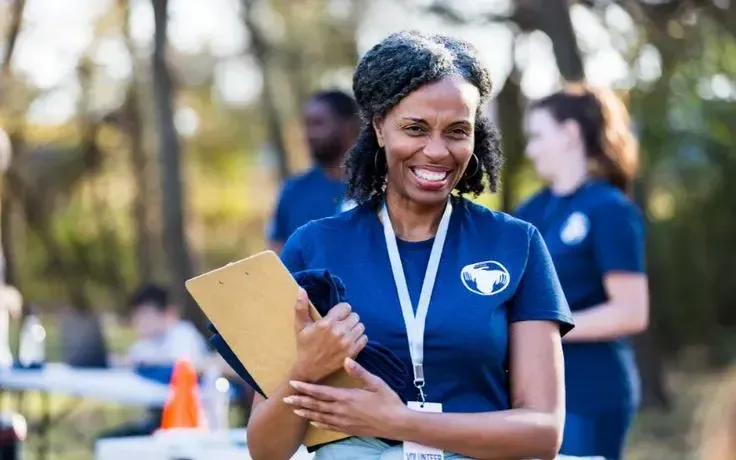Discover expert strategies in our "Traveler's Toolkit" for preventing and recovering lost items during your journeys. This guide offers advanced packing techniques, tech-savvy solutions, and proactive measures to safeguard your belongings, ensuring a stress-free travel experience. Equip yourself with the knowledge to navigate and overcome common travel challenges.
Introduction
Leisure or business trips are usually a real ‘roller-coaster’, with many changes, expectations and having different or new experiences. However, behind the adventurous moments that people get when they travel to new parts of the world, there is the basic that most of them struggle to deal with, and that is losing items. Lost passports, wallets, bags and other belongings are very distressing and this alone can dull a beautiful holiday experience. In this modern world of globalization, one small thing like a lost item that gives upheaval to well mapped schedules of travel, the travelers had to make themselves ready with not only how not to lose such items but how to look for them effectively.
This is the toolkit for the traveler here an experienced solution and best practice advice on how to keep your items safe while on the move. It explained that through the use of a combination of technology, organizational ability, as well as prevention skills and measures that enable one embark on any journey having been well equipped for any mishap that might occur. Whether a frequent traveller or a first time tourist, the following tips will enable you to read and act in order to minimise chances of getting lost or if you do get a loss then learn how to get back on track and continue discovering the world.
1. A personal and Moving Checklist with Care
It should be noted that being prepared is half the battle and the starting point of all successful travel as a rule should be associated with thoughtful preparation and rather careful packing. A systematic manner not only makes travel easy but also enshrines measures to minimize on chances of loss of properties. To avoid having a disorganized pack organize your items into categories and pack them separately with the use of cube packs that has different section for your Clothes, gadgets and toiletries. Apart from contributing to the neat packing of the luggage, it also ensures that anyone who needs to access any item in the suitcase does not have to compulsively search the whole suitcase. Moreover, a very useful tip, practised across the world, is to always make sure that no item is left out by keeping a packing checklist and this can be done not only before the packing for the trip but also when repacking on the return journey.
Apart from simple categorization, think about such measures of protection and readiness as are tailored to safeguard and provide quick access to essentials. For instance, it is always safer to have your money, wallet, passports, and other valuables with you in the overhead cabin rather than a check-in baggage. It keeps them close and in sight in case there is any form of trouble they wanted to get into they won’t be out of your sight. Besides, having such items in a different, preferably a separate compartment or pouch in the carry-on enhances an additional tier of organization and minimizes chances of lose of data in the process. Incorporation of these delicate packing techniques into your everyday practice lays a firm groundwork for a successful and stress-free VFR travel.
2. Utilizing Technology for Prevention
That is why in the information least of the modern world they can find a number of means to avoid loss of valuable items while traveling. One of the most efficient apparatus is to utilize tracking devices such as AirTags, Tile, or counterparts which may be put on your luggage, keys, and / or other gadgets. These are tiny and unobtrusive gadgets that connect to your smartphone and then enable you locate any lost item in real time. If an item is lost, it is possible to locate where it is and indeed take corrective measures to recover it. This sort of a technology integrated approach not only improves the outcomes of the find lost items but also strengthens the feel of the control over the items you have.
In addition to tracking devices, one should utilize applications for mobile devices intended for storing the list of packed things. These apps may as well be used as virtual catalog of your suitcase, so you can easily check what you have packed and if something is missing. Additionally, the act of taking photographs of the packed items, money, documents, identification, among other valuables, before boarding the vehicle provides an additional measure of protecting the luggage and other items. If ever there is loss, then having a photo to help out in the searching of lost items would be a big help. When you join these technological implements into your travel planning you minimize the probability of misplacing your valuables besides being in a position to respond to any mishap.
3. On Organization of Important Documents
Notably, your travel documents are perhaps the documents that require the strictest protection at any given time when travelling. The papers that most often are misplaced include passports, tickets, visas, and insurance papers as they are crucial during travelling, and often when organizing a trip, there is little time to spare. To identify with this, it is important to development a sound procedure for handling such papers. First built-in-room, a separate clearly defined area of velocity to them, preferably in a special closed wallet or holder. This means that all your papers important to you are all in one folder, thus minimizing cases of leaving some paper behind. Also, preserving this holder in a simple to reach and yet closed position like inner pocket of the carry-on bags is helpful in case one needs to access it.
Since nothing is as certain as death and taxes, make copies, both paper and electronic. These can be contrasted in that the physical copy can be packed in a suitcase or bag, or even in a car, while the digital one must be uploaded to the cloud or to a password protected equipment separately. This redundancy assure that, even if the documents are lost or stolen, you have all the information required to continue the journey or to purchase the missing items. Further, perhaps you should consider providing a person close to you with the copy of your schedule and all relevant related documents in case of an emergency. Thus, by creating strong organizational system of your travel documents you are not only avoiding the possibility of a loss but also guarantee yourself the mechanisms to deal with a potential loss.
4. Proactive Measures During Travel
Once you start your travel, there is much that can be done to prevent your things getting lost and keeping yourself safe and secure. One of the best precautions that everyone should take is to create the habit of performing a ‘seat check’ and the environment before leaving any place, whether in an airplane, train, bus or café. This fast scan can also alert you to any objects you might have missed such a phone, wallet or jacket. This is particularly important if you are in the habit of changing locations after some time; you don’t want to find out later that something is missing only for you to be left with the stress and inconvenience of going back for it.
Moreover, many travelers should also practice periodically generating inventories especially during transfers between hotels, or during transit between flights. Perhaps, it is worth producing a mental or a simple list of the carrying items and make sure you have checked all of them before proceeding. While in hotels and hostels use the in-room safes for your valued items or buy a portable travel safe or a locked bag for when you are not in the room. Such measures may not be complex but they will go a long way in minimizing losses as your travel is pleasant. and enjoyable.
5. Measures to Take in Case an Item is Lost
Despite the use of various strategies on how to avoid the loss of an item during travels, there may be a moment that the item gets lost. In such cases, speed and coordination in responding bears all the hallmarks of raising the possibility of emergence. First of all, try to start follow your trail as soon as you notice something is lost, to try to look for the object at places where it was last in use or where it was left. If this was in a public area such as an airport, hotel or a train station, it to the authorities or lost property offices. Currently, many places have computerized lost and found service where you can report on the lost items and the status of the lost property in question is retrieved on computer.
Do not underestimate word of mouth and especially social media and community online forums to help you get your lost belongings. Reporting the loss through a brief description of the lost item and location as well as a photo and the time that it was last seen will be of assistance. Others on the road or people from the country could have found your possessions or have some recommendations on where to look in the future. Also, through the utilization of social media such as twitter, face book, and Instagram one is able to post the incident and reach out to a many people who could be of help in the recovery process. If you move fast and hit both offline and online services, of course, you increase your chances of finding the lost item.
Conclusion
Being armed with adequate protection bears you able to face the ever-shifting dynamics of travelling without personal belongs. According to the details mentioned in the section on optimum planning, the right use of technology, and involving preventive measures, it is possible to minimize the chances of losing property. Further, by having a plan of action on how to deal with lost items, one is prepared to handle situations that may slow down the quest and go on with the journey without much hindrance.
Finally, all the strategies presented in this article are not limited to the desire to Avoid Loss but aimed at building the spirit and culture of Safety. Tourism in its essence is about taking risks and dealing with the unfamiliar with confidence. If the appropriate precautions are taken and when one is prepared for change to unexpected situations, you can enjoy your travels with greater peace of mind, knowing that you are equipped to handle whatever comes your way.


























